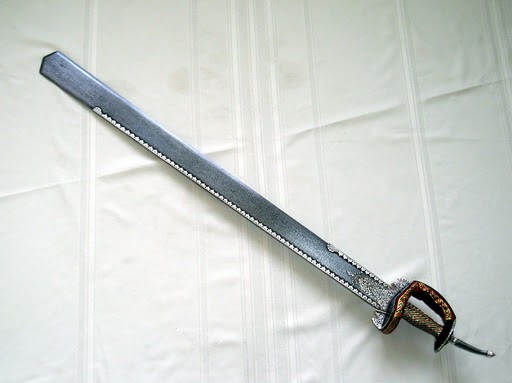Throughout history, the debate over the superiority of curved swords versus straight swords has persisted. Curved swords have been favored in Eastern cultures, while straight swords have been favored in Western cultures. Curved swords excel in swiftly taking down multiple enemies, while straight swords are more effective in one-on-one combat. However, the definitive answer to which sword is better remains unresolved.
Despite the absence of swords in modern battles, they continue to captivate our interest as we analyze ancient and medieval warfare. From European broadswords to Japanese katanas, we study, compare, and imagine battles between skilled swordsmen wielding different types of swords.
Origins: West and East
The ongoing debate among sword enthusiasts centers around the two dominant sword shapes: curved and straight. Historically, Western European cultures favored straight swords, while curved swords were prevalent in the East, particularly Middle Eastern scimitars and Indian Talwars.
Indeterminate Victor
Medieval history indicates that neither the West nor the East had a supreme civilization. The preference for a particular type of sword was dependent on the era. However, each culture clearly favored their chosen sword over their adversaries’. So, which sword is the ultimate champion?
The answer lies in the fact that the strict division between straight and curved swords, reflecting the cultural differences between the West and the East, is false. Eastern cultures possessed numerous straight swords, such as the Indian Khanda and the Turkish Y’tanga. Similarly, there were curved swords in Europe, including the Szabla and the Flacion.
 A Rajput Khanda
A Rajput Khanda
Nevertheless, it is true that Eastern cultures embraced curved blades more fervently than their European counterparts. This can be attributed to the landscape and wildlife prevalent in the region.
Preference in Eastern Cultures
The popularity of curved swords in Eastern cultures can be attributed to the vast expanses of land in the Middle East, Central Asia, and India, which were ideal for cavalry charges. Genghis Khan’s conquest of Asia and the Mongols’ success were greatly aided by their formidable curved scimitars. On horseback, wielding a curved sword proved to be much easier than using a straight sword.
Cavalry
Supporters of curved swords often argue that the curved blade is more effective in cutting, but this is not necessarily accurate. The curve does not enhance cutting ability, but it does facilitate more efficient strikes. Give a curved sword to a mounted warrior facing a multitude of infantry soldiers, and the devastating impact on the battlefield becomes evident.
A curved sword is easier to wield on horseback and less likely to get stuck in an opponent, making it a better choice for soldiers in battle. Eastern armies, known for their large size, often relied on archers who would switch to swords when necessary. Curved swords are also easier to draw and have a larger cutting area, making them ideal for quickly dispatching multiple enemies. However, in one-on-one battles or when facing opponents in chain-mail armor, a straight sword is superior. Straight swords allow for more precise thrusting and blocking, and the strength behind each strike can be deadly. Ultimately, the debate over which sword is better continues among sword enthusiasts.
